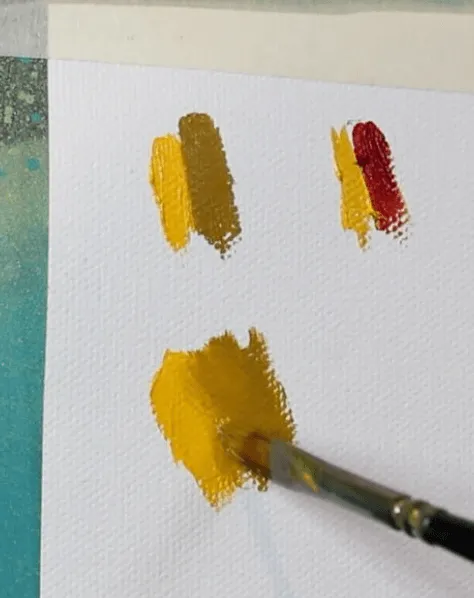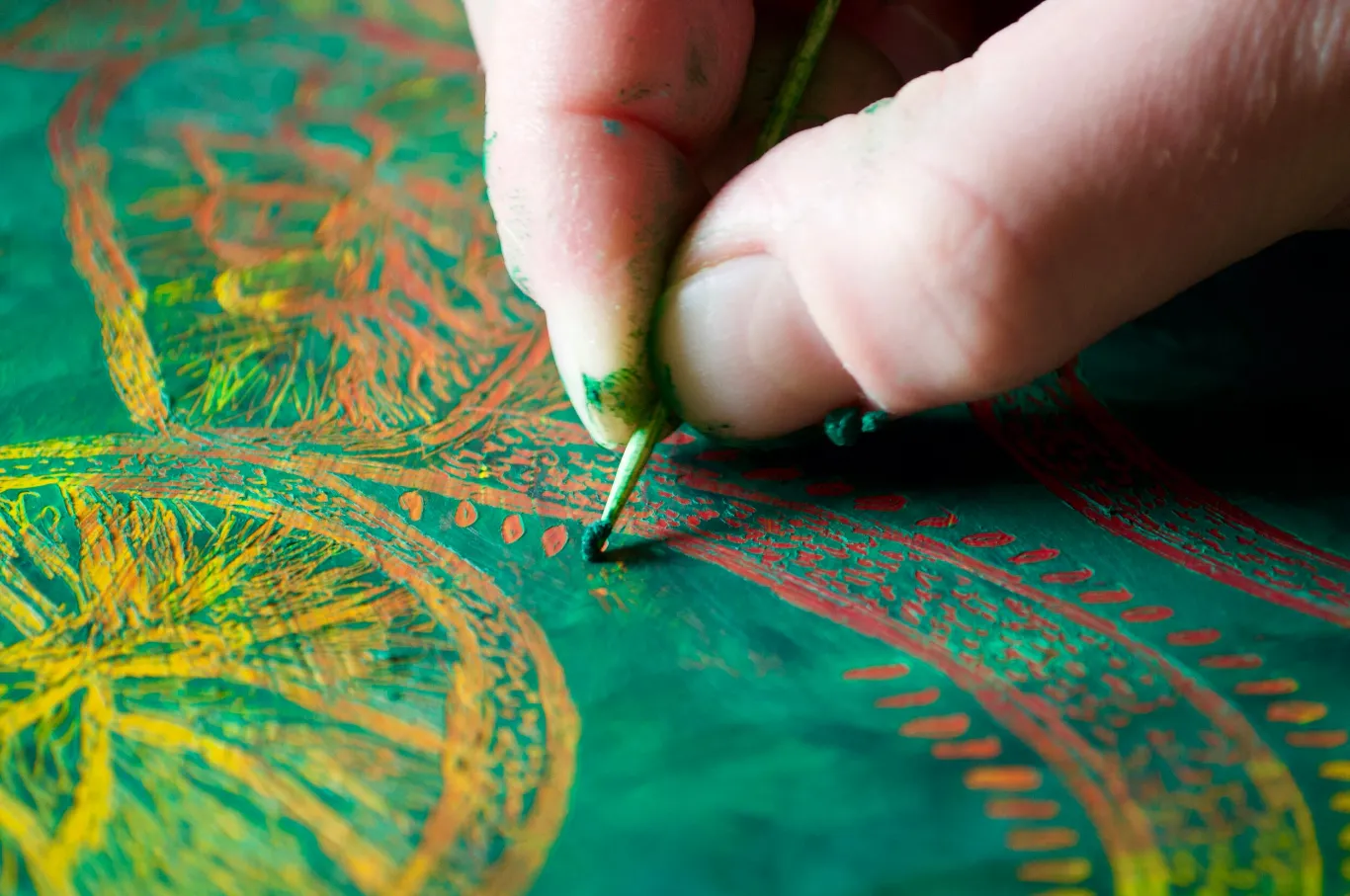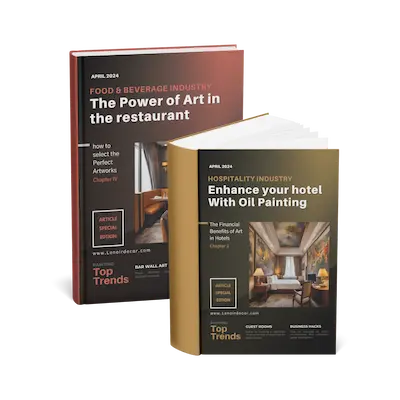Oil painting, an artwork that is recognised for its flexibility and sense of depth, has made it possible for oil painters to be creative as they desire. Some of the most known artists of all time, like Rembrandt, Vincent Van Gogh, Leonardo da Vinci, and Claude Monet, used oil paints to produce their most famous works. However, to fully exploit this painting medium, one must have a grasp of different painting oil on canvas techniques and an understanding of layers of paint colours. It is time to travel through the vast landscape of oil painting and discover some approaches to painting and processes to enhance the sort of finished painting is trying to create during the painting session.
1. Understanding the Basics of Oil Painting

However, to briefly define the overall subject, one must have basic technique of oil painting in layers. This is knowing composition of oil paint, the preparation of the canvas, paint layers, the medium and the thinner.
- Oil Paint Properties: This consequence affects for fastest drying, the degree of permanency of the paints, and the painting surface texture all of which contribute to coming up with an intended result.
- Canvas Preparation: When painting the surface of the garment, great importance should be paid to the preparation of the surface so that the paint adheres to the garment well and does not wear out quickly. Discover various canvases, its appropriate smooth surface preparations, as well as methods of stretching the canvas. Priming protects the fibers while also creating a smoother surface, tightening the canvas, and encouraging effective adherence of paint layers. Most prepared canvases will claim that they are 'Triple primed with three layers of gesso', which means that they have been primed with a universal acrylic-based primer that can be painted with either oil or acrylic paint. Not only will it be pricey and take forever for your paint to cure, but the outer skin of a thick mass of paint will dry faster than the paint on the interior, resulting in a wrinkled surface.
- Mediums and Thinners: Understanding how to alter paint consistency, slow drying time, and tint strength using mediums & thinners. Other mediums which include linseed oil, walnut oil and alkyd of distinct effects to the paintings. Try for yourself to find out what method is fitting your paintings most.
2. Mastering Essential Oil Painting Techniques
Experienced artists use a variety of approaches and styles of painting to produce unique and compelling pieces of art during the painting process. Here are a few essential approaches to investigate:

- Impasto: Vincent van Gogh is a well-known artist who used a lot of impasto techniques for textural painting. This approach includes putting thick layers of color on the canvas to add texture, depth, and visual appeal. Variating the thickness and direction of the paint application allows you to generate a wide range of effects. Experiment with different palette knives, dry brush and safflower oil to create your textural paint. It is usually assumed that Rembrandt was one of the first artists to apply his exquisite textural paint with a knife. Van Gogh is a more current example. You may utilize the impasto technique to create the sense of distance, with close portions being more built up and distant regions being smoother and softer. If you wish to paint extremely thickly in a 'impasto' style, you may combine a variety of materials with your paint; we'll go into impasto painting in further detail later. Whatever way works for you is just acceptable.Impasto painting.Impasto is just a phrase for working with really thick and stiff paint.
- Alla Prima: This "wet-on-wet" technique includes layering wet paint over wet paint to capture spontaneity and freshness. It calls for rapid decision-making and competent brushwork. This approach is useful for capturing ephemeral moments and light effects. In French it was known as ‘alla prima'. Regardless, if you choose to work in this extremely rapid and direct approach without any background color and possibly no'sketching out', you have the option of applying your paints wet-on-wet in one of two ways: wet wet, or wet into Lady Agnew of Lochnaw by John Singer Sargent.
- Scumbling: Using a dry brush and paint brush, apply a thin layer of paint over a dried underpainting to get a soft, hazy look. It's perfect for conveying distance, mood, and texture. Experiment with different dry brush techniques and colors to create different scumbling effects.

|

|
3. Exploring Advanced Oil Painting Techniques
To broaden your artistic palette, application of paint and how to choose your oil paint colours , consider experimenting with these advanced techniques on:
 |
3.1. Blending: Colors are seamlessly merged to produce smooth transitions and harmonies in color wheels. Various blending techniques, such as gentle blending, hard-edge blending, and glazing, can be tried. Then, using a flat brush, smooth the paints together, moving in the direction of the blend. Blending is useful for creating delicate color gradations and atmospheric effects for quality of paint. This method is best for if you want a fast approach to painting, without having to wait for drying times, and you can get some nice effects and blending techniques from it. |
| 3.2. Brush strokes: The technique you apply paint with your brush has a big influence on the appearance of your work. Experiment with various brushstrokes, including quick, jagged strokes for texture and long, flowing strokes for movement. Using tradtional brushes is highly recommended for oil painting. Hog hair, which is flagged (split) at the end of each bristle and is firm and springy, is used to make traditional oil paint brushes. While it is challenging to duplicate hog bristle with a synthetic brush, there are high-quality synthetic versions available that are constructed with polyester filaments that closely resemble the form, hardness, and microscopic texture of hog hairs. Create your own distinctive brushstroke style to get rid of bad strokes in painting. |  |
 |
3.3. Palette Knife Techniques: Using a palette knife provides a diverse way to apply paint, create texture, and achieve impasto effects. Experiment with various palette knife shapes and approaches to open up new possibilities. Rembrandt is widely regarded as one of the first artists to use a knife to apply his exquisite textured paint, with Vincent Van Gogh serving as a more current example. |
 |
3.4. Sgraffito: This kind of technique involves scratching away layers of paint to uncover underlying hues, which produces unique visual effects. Sgraffito is a technique for adding depth, contrast, and visual appeal to paintings. |
 |
3.5. Chiaroscuro: This method employs stark contrasts between light and shadow to produce dramatic, three-dimensional images. Mastering chiaroscuro may give your work more depth and reality. |
4. Tips and Tricks for Oil Painting Success
- Color Theory: Understanding color wheel such as mid - tone, dark tone and bright tone, or disposable palette is essential for designing visually pleasing compositions. Experiment with different colour palettes and primary colors to see what suits you best. Cadmium yellow, yellow ochre, cadmium red, alizarin crimson, ultramarine blue, titanium white, and mars black are the most fundamental colors to have in an oil painting collection. Painting your lower layers in completely saturated, rather impenetrable blocks of color is a more contemporary method of working. To make things easier, Titanium White, Ultramarine Blue, Cobalt Blue, Yellow Ochre, Raw Sienna, Burnt Sienna, Rose Madder, Viridian, Cadmium Red, Medium Yellow, Lemon Yellow, and Violet make up a fantastic basic palette. Individual tubes or mixing and matching are also available.
- Value and Composition: Mastering value (the brightness, mid - tone or dark tones of a color) and composition can improve the overall impact of your paint neat. You'll look at which hues to avoid owing to fading or chemical instability and gain quality of paint. Study the works of renowned artists to acquire composition fundamentals.
- Practice and Experimentation: Consistent practice is essential for enhancing your talents. Don't be scared to try out new approaches such as 'semi-matt finish, subjects, and styles. Keep a sketchbook for recording your progress and thoughts. You can keep paint workable on a palette for longer by covering it between painting sessions.
- Patience: Oil painting is a time-consuming procedure. Allow plenty of time for subsequent layers to dry and minimize annoyance. Accept the leisurely pace of painting medium and appreciate the experience. Each subsequent layer of paint should include more oil than the one before it. You may select a matte, satin, or glossy finish. Because oil paint dries so slowly, it is normally recommended that varnish not be added within 3-12 months after completing the painting (opinions as to the ideal waiting time). Beeswax pastes are popular, and Winsor & Newton produces two varieties of quick-drying Liquin medium for thick painting: 'Oleopasto', which dries to a semi-matt finish, and Liquin 'Impasto' gel, which dries glossier. Make sure you have to clean your brushes regularly. Here's how to ensure that your brushes are spotless: Wipe them with a cloth, paper towel, or newspaper after dipping them in a container of solvent- or solvent-free cleaning. To seal the wood and reduce its absorbency, you must "condition" a newly purchased wooden palette by repeatedly wiping it with a towel dipped in linseed oil. These are really useful for painting outside when it would be hard to wipe up a wooden palette before taking it home. They function wonderfully.
- Inspiration and Reference: Seek inspiration in the world around you. Oil medium references might be images, drawings, realistic portrait, or objects. Examine the other oil paintings of other artists to learn about their approaches and styles.
5 .Key takeaways
Exploring these oil painting techniques and experimenting with different approaches can help you build your own creative style and produce intriguing works of art.
Are you ready to begin on your oil painting journey? Contact us for a free consultation to help you realize your artistic potential with our complete guide on oil painting techniques.






